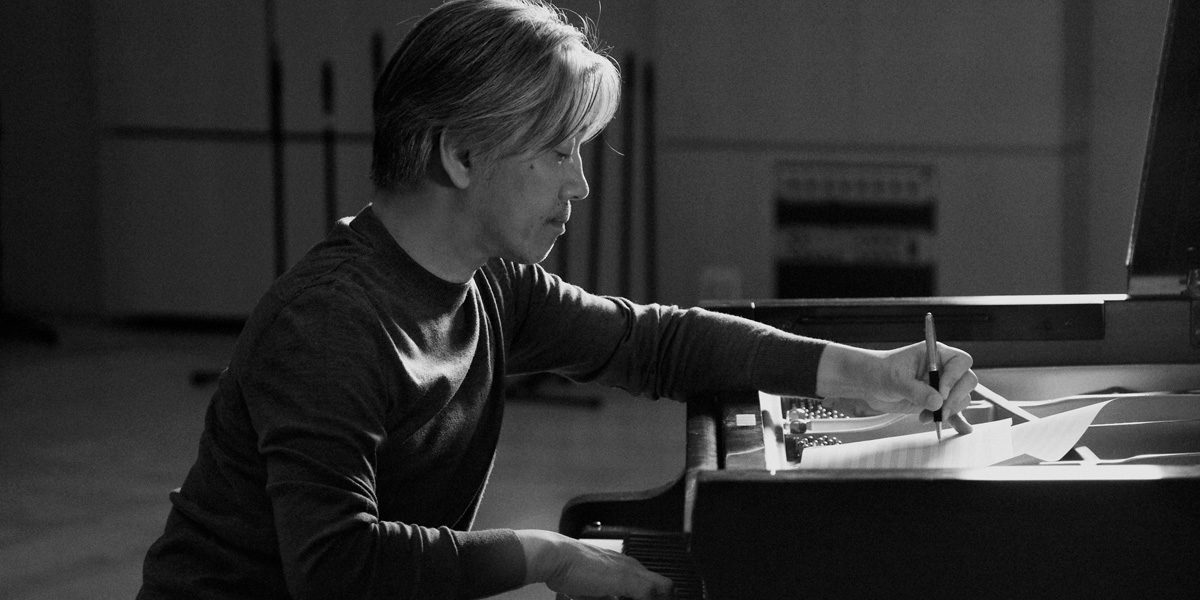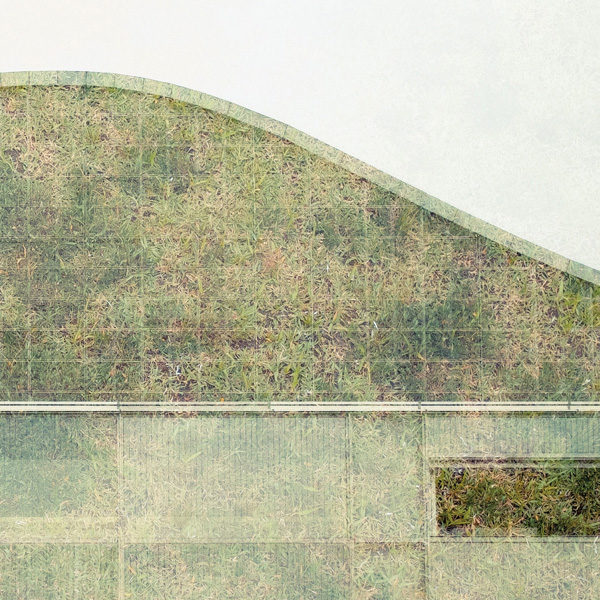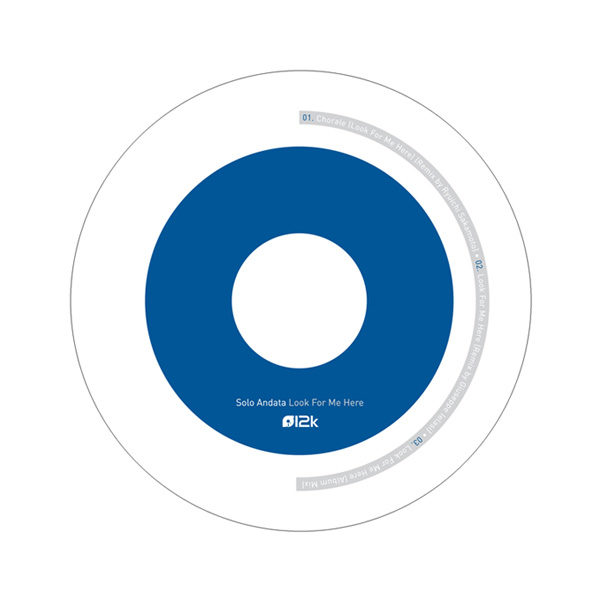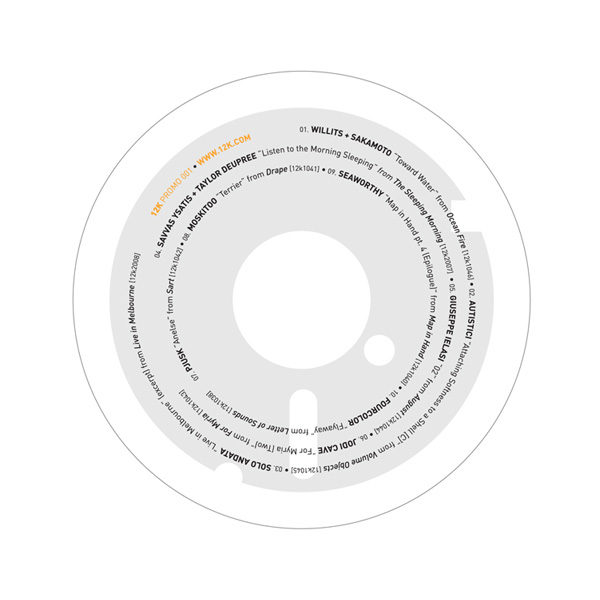Ryuichi Sakamoto
Award-winning composer and musician Ryuichi Sakamoto has made a career of crossing musical and technological boundaries. Sakamoto has experimented with, and excelled in, many different musical styles, making a name for himself in popular, orchestral, and film music. Never one to be satisfied with the status quo, Sakamoto continues to push the envelope of his artistry, marrying genres, styles, and technologies for the first time to create new and exciting directions in musical expression.
In 1963, at the age of eleven, Ryuichi Sakamoto, whose musical interests ranged from the Beatles to Beethoven, began studying music composition under Professor Matsumoto at Tokyo National University of Fine Arts and Music. Eight years later, he entered Tokyo National University of Fine Arts and Music, earning a BA in composition, and then a masters degree with a concentration in electronic and ethnic music. In 1977, Sakamoto began working as a composer, arranger and studio musician with Japan’s most popular rock, jazz, and classical artists, and within a few years, he became a noted producer, arranger and keyboardist.
In 1978, Sakamoto released his first solo album and formed Yellow Magic Orchestra along with Haruomi Hosono and Yukihiro Takahashi. Y.M.O. was immediately recognized as an international sensation from Japan. Their second album sold well over a million copies, led to a world tour, and made them, with Kraftwerk, the kings of technopop. Releasing eleven albums over the next five years, YMO developed a following that continues to the present day, and their influence on the rave, techno, and ambient movements is widely recognized.
Sakamoto’s interest in different types of music – jazz, bossa nova, modern classical, dub and gamelan – was evident in his writing for YMO, his own solo albums, and starting in 1983 with “Merry Christmas Mr. Lawrence,” a series of soundtracks. That year, Sakamoto left YMO to launch his career as a solo artist and to pursue his interest in “world music.” He said at the time, “I have a kind of cultural map in my head, where I find similarities between different cultures. For example, domestic Japanese pop music sounds like Arabic music to me – the vocal intonation and vibrato, and in my mind Bali is next to New York. Maybe everyone has these geographies in their heads; this is the way I’ve been working.” This diversity has carried over in Sakamoto’s collaborations with, among others, David Bowie, David Byrne, David Sylvian, Iggy Pop, Youssou N’dour, Robbie Robertson, Caetano Veloso, as well as writers William Burroughs and William Gibson.
Sakamoto’s best-known work is probably the soundtrack to “Merry Christmas Mr. Lawrence,” but in 1987, his score for Bertolucci’s “The Last Emperor” won him an Oscar, a Grammy, a Golden Globe, as well as the New York, Los Angeles and British Film Critics Association awards for best original soundtrack. Since then he has worked with Bertolucci twice (“The Sheltering Sky,” “Little Buddha), Oliver Stone (“Wild Palms”), Pedro Almodovar (“High Heels”), Brian De Palma twice (“Snake Eyes,” “Femme Fatale”), and most recently François Girard (“Silk”). Sakamoto’s work as a composer for film was recently praised by Billboard magazine, “[his] pieces were composed mostly as aural accompaniment to visual events – but they exist on their own as pure music, evocative and compelling without any external program. “The Last Emperor,” “Little Buddha,” “Wuthering Heights,” and “Forbidden Colours” (Merry Christmas, Mr. Lawrence) are some of Sakamoto’s most renowned themes, each evidence that he is one of the more memorable melodists working today. And these compositions – along with the epic “El Mar Mediterrani” (written for the opening ceremonies of the 1992 Barcelona Olympic Games) and the rarely heard “Replica” (which originated on Musical Encyclopedia, one of Sakamoto’s genre-defying solo albums) – are an ideal introduction to the art of a composer who revels in the polyglot Zeitgeist that marks the end of our century.”
Sakamoto also maintains a career as an actor, having starred in “Merry Christmas Mr. Lawrence,” “The Last Emperor,” Madonna’s “Rain” music video, and most recently in Abel Ferrara’s “New Rose Hotel” alongside stars Christopher Walken and Willem Dafoe. Sakamoto has appeared as a celebrity model for Barney’s New York, fashion designer Antonio Miro, the Gap, and from time to time has appeared as menswear model in the world’s most prestigious magazines. Sakamoto made his debut as a DJ in 1997 at Stephen Sprouse’s spring ’98 show, which also marked Sprouse’s triumphant return to the fashion world. In 1999 Sakamoto’s first opera, “Life,” premiered with seven sold-out performances in Tokyo and Osaka. This ambitious project featured contributions and performances by over one hundred performers, including: Jose Carreras, Salif Keita, Bernardo Bertolucci, Salman Rushdie, Pina Bausch, His Holiness Dalai Lama, and members of the Frankfurt Ballet. Sakamoto closed out 1999 with his first collaboration with Robert Wilson in “THE DAYS BEFORE: Death, Destruction & Detroit III,” and with the release of his first #1 single in Japan for the solo piano piece “Energy Flow.” Sakamoto’s second #1 single would follow in 2001 for the collaborative piece “Zero Landmine,” which has helped raise millions of dollars to support ongoing landmine removal efforts around the globe in conjunction with the HALO Trust.
Sakamoto joined frequent collaborators Jaques and Paula Morelenbaum at the home of Antonio Carlos Jobim in Rio to record “Casa,” a collection of hidden treasures and some previously unrecorded material written by Jobim. The recording of their first release under the group name Morelenbaum2/Sakamoto was a magical experience for Sakamoto, “The whole experience was spiritual, as if Tom’s spirit came into me through the fingerprints on the keys of his piano. During one of the recordings at his house a bird suddenly sang in the middle of the song. We all thought that was Tom.” The magical atmosphere was certainly captured in the recordings, as evidenced by the reaction of Jobim collaborator Vinicius de Moraes’ daughter Luciana, “Sakamoto’s musicality felt so close to that of the maestro, and this fact deeply impressed me. I might say that I had never heard such a close translation of the maestro’s melodies, and I had the privilege of listening to Tom playing many times at my grandma’s place when I was a child. What I liked most about this CD, besides the harmonic perfection, the repertoire and the interpretation was that familiar atmosphere that takes us back to one of those evenings at Tom’s house, when we talked about love, music and poetry, while in the background the most perfect Brazilian songs filled the night air. As my father wisely said in one of his lyrics, celebrating Brazilian composers, ‘we are one family, an island made of love,’ welcome to it, maestro Sakamoto.” On July 7th, 2004 the group won a Brazilian TIM Award for best MPB (Música Popular Brasileira) Group.
Sakamoto returned to his electronic roots in 2005 with his 15th solo release Chasm, which was re-interpreted by fourteen of electronic music’s top artists on the release Bricolages.
Sakamoto remains active in the fields of soundtracks and collaborations. Sakamoto released the minimalist piano score for “Tony Takitani,” and the orchestral “Shining Boy and Little Randy.” Sakamoto’s collaborations with Alva Noto and Christian Fennesz have earned massive critical praise for the releases “Insen” and “Cendre” respectively. Sakamoto and new collaborator Christopher Willits release their first collaborative effort, “Ocean Fire” in 2008.
Sakamoto is also socially active, raising awareness about issues including the environment and anti-war efforts through projects including: Life, Zero Landmine, and stop-rokkasho, an evolving music and art project aimed at bringing attention to the dangers of a nuclear reprocessing plant through the project’s home at www.stop-rokkasho.org.
In March, 2003 Sakamoto launched the chain-music project, of which he says:
When the US invaded Iraq, I felt that I had to advocate peace over war, so I started this little web project. Even though the 100,000-plus Iraqi civilian and the 3,000-plus US military lives lost to date can’t be brought back, I want to keep this project alive and open until the war has ended, until peace comes to Iraq.
The idea of the project is to “chain” musical pieces from one artist to another, like a chain letter. Sakamoto says the purpose of the project is to “musically mark the passage of time that Iraq is in a state of war, to mark the steps to peace, to take each day that there is war and build a musical memorial to the desire for peace as well as to mark off the time of war.” So far 25 artists have contributed their musical pieces, adding on to the existing work vertically as well as horizontally, overlaying or extending the existing creation. The only “rule” of the project is that contributors cannot eliminate any of the existing music as he or she adds to it, out of respect to the artistic contribution of the other artists.
With Ryuichi Sakamoto the only constant is change. The sheer breadth of musical styles he explores – even within one album – is central to his being as an artist. He feels no need to exist within musical boundaries, and he celebrates tearing them down. “This global view to the different cultures is just part of my nature. I want to break down the walls between genres, categories, or cultures. Instead of building walls or borders, I always try to combine different things. To me, it’s challenging and exciting.”





